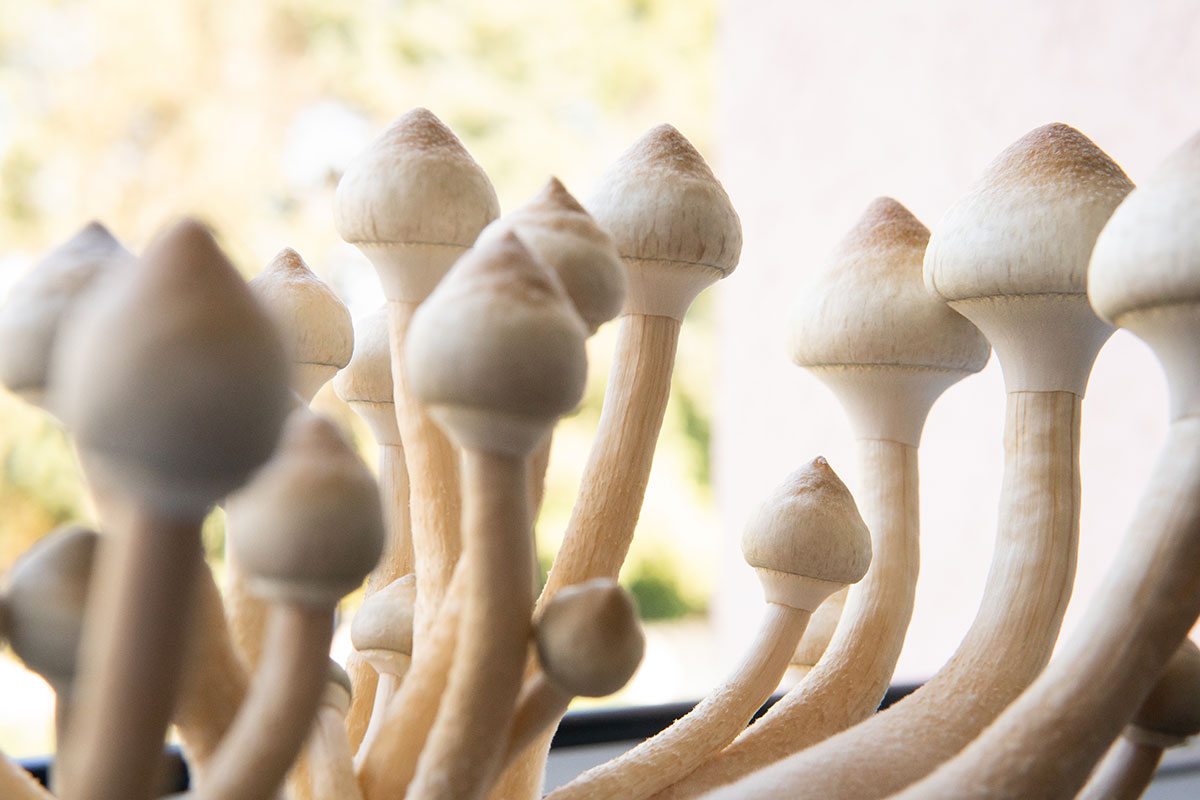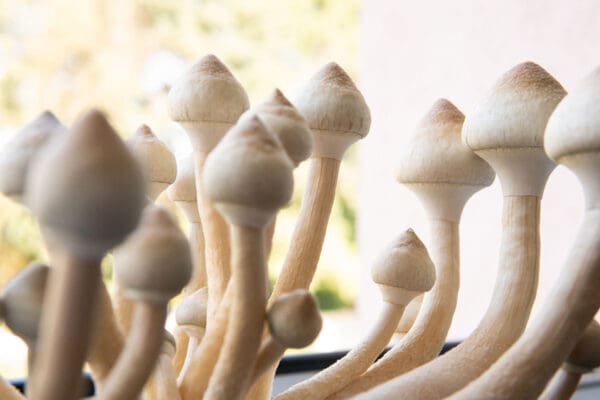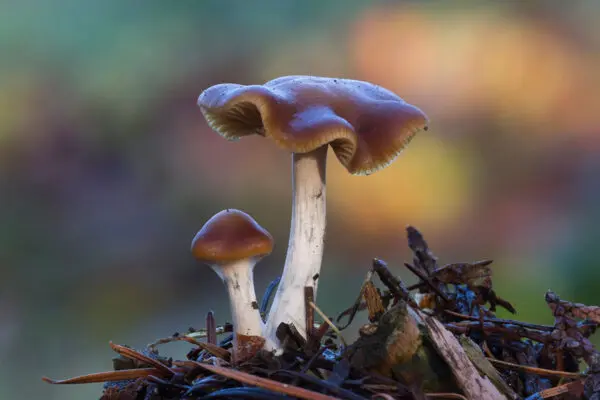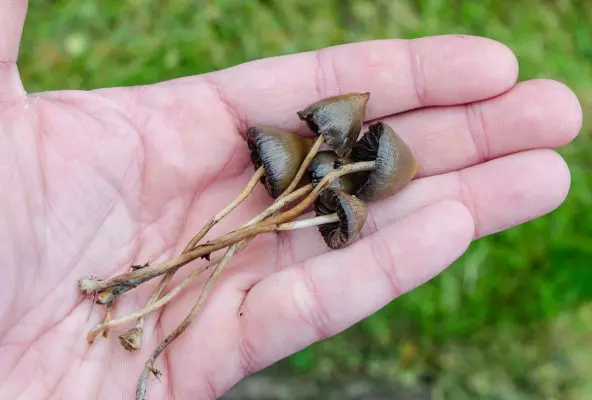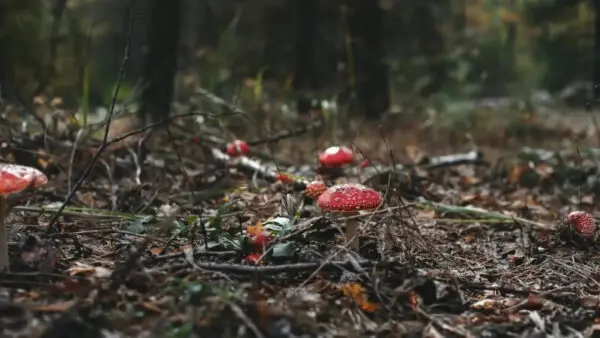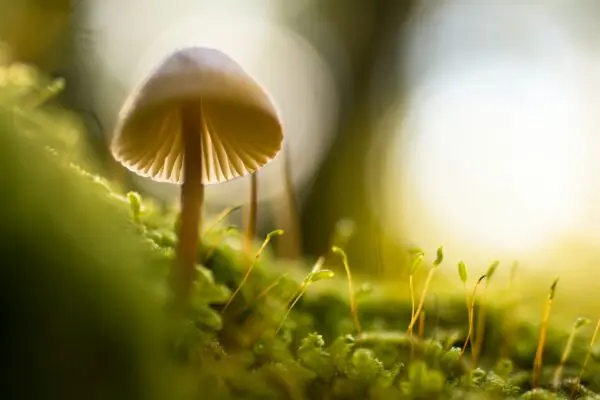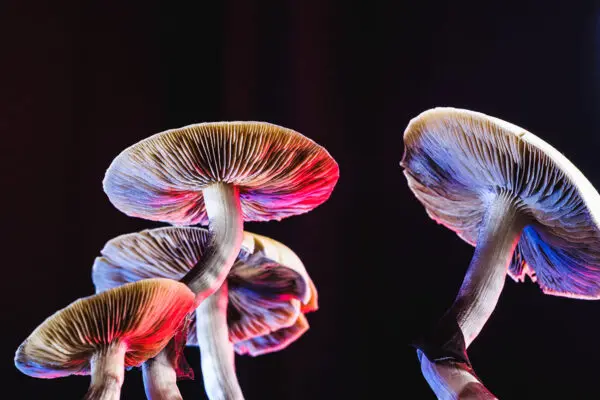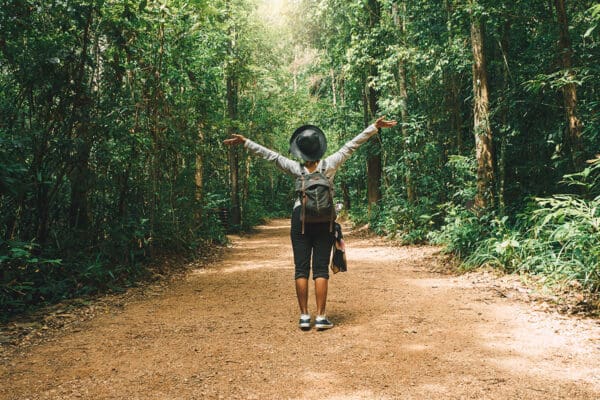There are many varieties of magic mushrooms that can take people on a mind-altering trip. The iconic red and white-capped Amanita muscaria, known as Fly agaric, might be easiest to bring to mind — but did you know this fairy tale mushroom revered by indigenous groups of Lapland does not produce the psychoactive psilocybin, but rather it produces muscimol? However, psilocybin is produced by hundreds of other species across several genera of fungi.
What Makes Psilocybe Mushrooms Magical
Magic mushrooms are fascinating, and not just for the trips they offer. The blueprints for producing psilocybin are an evolutionary adaptation. Psilocybin acts as a natural pesticide, leaving one to wonder if the insects are tripping too. Similarly, the active ingredient cocaine in the coca leaf is also a natural pesticide. But curiously, these genetics were not passed down vertically from a single source. Rather, the blueprints for making psilocybin were rapidly shared among fungi across the entire planet through a process known as horizontal gene transfer.
Over 200 known mushroom species produce psilocybin, and there is no reason to cover all of them here. Instead, we will consider some of the most commonly available, specifically the psilocybe species. In Greek, “psilocybe” means “bald head,” but not every psilocybe mushroom has a rounded cap. Depending on the growth stage and variety of the mushroom, the cap may be unfurled and flat or incredibly small and delicate.
All psilocybe mushrooms have gilled caps, a thin membrane or veil connecting the stem and cap, and will bruise blue, meaning that when tissue is damaged or handled, the psilocin present in the mushroom will oxidize at the site of injury. They are hygrophanous, and vary in coloration depending on their water content — so none of these descriptions are exact or should be used to identify magic mushrooms.
Keep in mind that while magic mushrooms are decriminalized in some places it is still federally illegal to cultivate or harvest psilocybin mushrooms. Be sure to do your own research and check your local laws before working with an experienced and well-referenced practitioner.
Magic Mushroom Strains
While it’s currently more likely that people encounter dried mushrooms in a bag or ground up in a capsule, for some people, cultivating one’s own medicine might be an essential part of a therapeutic process. As cities across the United States continue to decriminalize magic mushrooms, it seems likely that practitioners and people who work with them will increasingly encounter a wider variety of magic mushroom strains to choose from.
Because mushrooms also produce additional alkaloids and psychoactive compounds, it is possible that one strain may be more agreeable to someone than another, or that some psilocybe species might be able to treat one condition better than another.
This variance could be attributable to the entourage effect of alkaloids and other compounds present within a given mushroom, which suggests that every mushroom species’ unique components contribute to an over-arching effect that is not available through the administration of synthetic psilocybin alone. There is some debate as to whether synthetic or natural psilocybin is more effective or therapeutic, but until the law allows for medical research, this is not verifiable and remains subjective.
While the drug war drove research underground, radical DIY mycologists and hobbyist cultivators have been sharing and studying mushroom varieties for decades, leading to the development of dozens of unique strains. Some of these strains have awkward names (like “Elephant Dung” or “Pink Buffalo”; other strains honor the land they were isolated from (like “Colombian” or “Cambodian”).
Keep in mind that radical mycologists are frequently, but not always, classically trained in research and methodology. In any case, learning a bit more about the psychedelic you’re taking is an excellent way to prime a positive relationship with the medicine before taking a trip.
Azurescens Can Bruise to Nearly Black
The Psilocybe azurescens is one of the rarest and most potent magic mushrooms available, containing significantly more psilocybin than the more common cubensis species. This species only grows naturally on alder wood and in grasses of the Pacific Northwest Coast. Cultivating at home is possible but not always easy, and some deadly look-alikes grow in the same environments.
It is reported that this mushroom bruises heavily, almost turning black, due to its high concentration of oxidizing alkaloids. This species tends to grow in small tight clusters and has a chestnut or caramel-colored cap ranging from light to dark brown, depending on age. The cap is rounded or pointed depending on the specific stage of growth, and the spore print is always dark purplish-brown or nearly black. The gills are brown, the stipe (aka stem) is white, and the mushroom can grow up to 6-8 inches tall from the base.
Cubensis Are the Most Visually Diverse
The Psilocybe cubensis strains are prized among indoor cultivators, who have developed several strains of cubensis, commonly referred to as “cubes.” The species standard is a golden-colored cap, either rounded or convex, with a thin white stem that can reach up to 8 inches depending on the strain.
Some cubensis strains have diverged significantly over the years, with many cultivators identifying wild varieties and selecting for specific properties like color, size, growth rate, or potency. Many today feature light grey or pale blue caps, stems that are several inches in diameter, and others that produce red spores instead of the typical brownish-purple.
Every strain produces a range of alkaloids that contribute to the overall trip. There is a wide range of potency, and the reported onset of effects will depend upon the specific cubensis strain used. While all “cubes” may technically come from the same species and look visually similar, they are likely to present very different potencies, experiences, and potential therapeutic benefits.
Cyanescens Have Wavy Caps
The Psilocybe cyanescens mushroom has a characteristically wide, wavy cap — and so does its deadly look-alike Galerina marginata, often found growing nearby.
Cyanescens often flourish in massive patches, but they are difficult to cultivate indoors. Some people grow this mushroom’s mycelium and transplant it to an appropriate wooded area outdoors where the mushroom is more likely to survive and fruit.
The cap of cyanescens grows to around 1/2-2 inches with caramel to chestnut brown coloring that fades to a pale yellow when dried. The cap does not have a distinctly pointed tip, but rather a wavy formation along the edge that develops with maturity. The stem is white, and gills are darkened with maturity as the brown-dark purple spores are released. Even when dried, the characteristic wave of Psilocybe cyanescens can be evident.
Semilanceata Are Small But Mighty
Of these four species in the psilocybe genus, semilanceata is the smallest. Often referred to as the Liberty Cap, this prolific mushroom is potent, especially for its size. Unlike the others mentioned here, semilanceata feed off decaying grass and is widespread across Europe.
The cap and small size are the most visually unique features of semilanceata, which has a point in the center of the radial grooves on the 1-inch cap. The stem grows up to 4 inches, is the same or lighter yellowish to olive-brown color as the cap, and is very slender and delicate. The gills are light or creamy in color until they are stained by the brownish dark-purple spores.
Semilanceata can look deceptively similar to many dangerous Little Brown Mushrooms (LBM) and can be challenging to grow indoors because the species relies on grass, not dung like the easy to cultivate cubensis strains. When dried, the semilanceata mushroom will look darker brown depending on oxidation and bruising but will still feature thin stems and pointed caps.
A Final Thought: there are over 200 known species of psychoactive mushrooms, and while most are in the genus psilocybe, there are hundreds of varieties that are not. We have only covered the more common types that might emerge in places where people seek psychedelic mushroom therapy. Perhaps one day, practitioners, patients, and mycologists will be able to collaborate on clinical trials to help identify the most effective magic mushroom species for a given condition.
